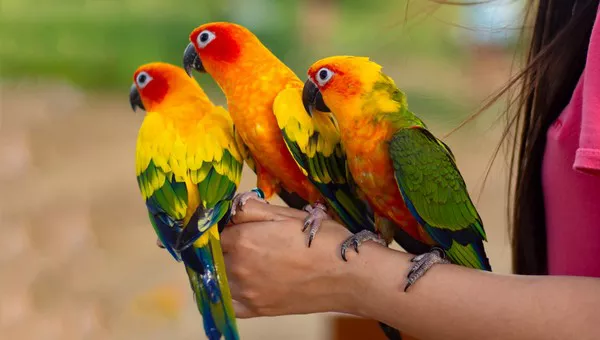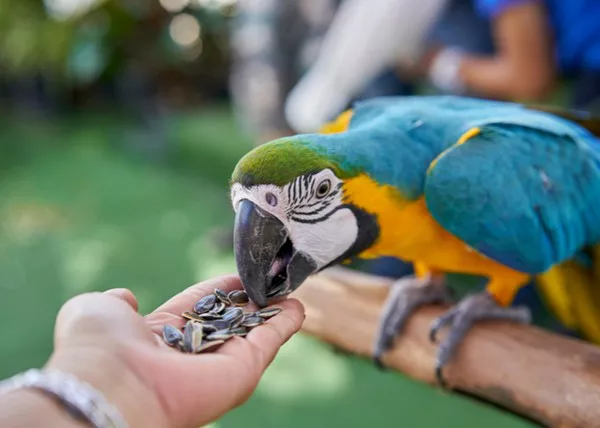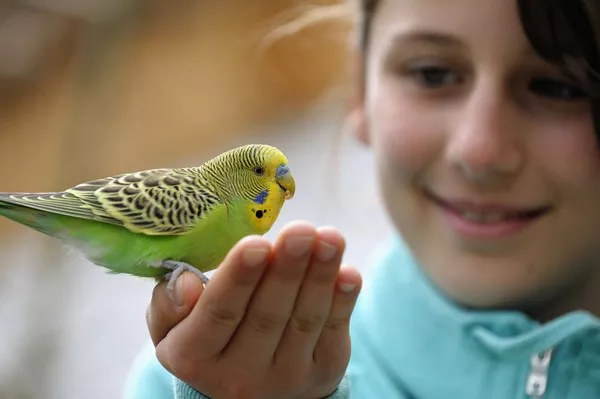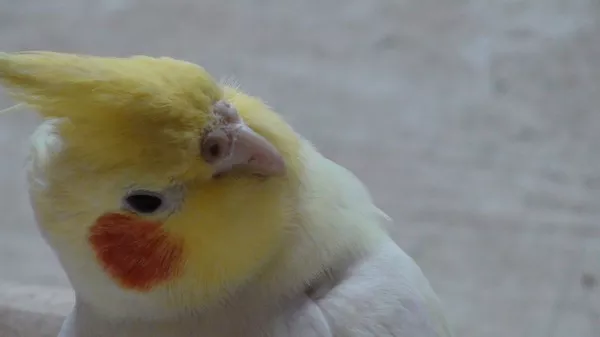When it comes to colorful and lively pets, sun conures and lovebirds often steal the spotlight. These small parrots bring joy to their owners with their vibrant plumage and playful personalities. But, are they the same? In this article, we’ll dive into the world of sun conures and lovebirds, examining their characteristics, behaviors, and care requirements, ultimately answering the question: Is a sun conure a lovebird?
Parrots are a diverse group of birds belonging to the order Psittaciformes. They are known for their intelligence, social behavior, and striking colors. Within this order, two popular species have gained a loyal following among bird enthusiasts: the sun conure (Aratinga solstitialis) and the lovebird (Agapornis species).
The Sun Conure
Physical Characteristics
Sun conures are small to medium-sized parrots, typically measuring about 12 to 14 inches in length. Their most striking feature is their bright, multi-colored plumage, which consists of vibrant yellow, orange, and green. The vivid colors of a sun conure can brighten up any room, making them a popular choice among bird lovers.
Personality and Behavior
Sun conures are known for their playful and social nature. They are affectionate birds that enjoy interacting with their owners and other birds. Sun conures are often described as “clowns” of the parrot world due to their playful antics and high energy levels. They thrive on social interaction and can become quite vocal, often mimicking sounds and phrases they hear from their owners.
Lifespan and Care
In captivity, sun conures can live for 20 to 30 years with proper care. They require a balanced diet consisting of high-quality pellets, fresh fruits, and vegetables. Sun conures also need plenty of mental stimulation and physical exercise, so providing toys and opportunities for play is essential.
Social Structure
Sun conures are social birds that live in flocks in the wild. This social behavior translates into their need for companionship in captivity. They may become depressed or engage in destructive behaviors if left alone for extended periods. It’s essential for owners to spend quality time with their sun conure or consider getting a second bird for companionship.
The Lovebird
Physical Characteristics
Lovebirds are smaller than sun conures, typically measuring about 5 to 7 inches in length. They come in various color mutations, including peach, green, and blue, with their plumage often being less vibrant than that of sun conures. Despite their smaller size, lovebirds are known for their bold personalities and affectionate nature.
Personality and Behavior
Lovebirds are known for their strong pair bonds and affectionate behavior. They are highly social and thrive on companionship, either with their human owners or another lovebird. Lovebirds are playful and energetic, often engaging in acrobatic stunts and playful interactions with their toys.
Lifespan and Care
Like sun conures, lovebirds can live for 10 to 15 years or longer with proper care. Their diet should include high-quality pellets, fresh fruits, and vegetables. Lovebirds also require plenty of mental and physical stimulation, making toys and social interaction essential for their well-being.
Social Structure
Lovebirds are often kept in pairs because of their strong social nature. In the wild, they are known to form monogamous bonds and can become quite attached to their mates. If kept alone, lovebirds can become lonely and may develop behavioral issues.
Comparing Sun Conures and Lovebirds
Taxonomy and Classification
To understand whether a sun conure is a lovebird, we must first look at their classification. Sun conures belong to the genus Aratinga, while lovebirds belong to the genus Agapornis. This taxonomic distinction means they are separate species with different characteristics, behaviors, and needs.
Size and Appearance
While both sun conures and lovebirds are small parrots, sun conures are larger, measuring about 12 to 14 inches, compared to lovebirds’ 5 to 7 inches. Sun conures boast bright yellow and orange plumage, while lovebirds have more subdued colors, often featuring shades of green and peach.
Behavior and Social Needs
Both species are social, but their social needs differ. Sun conures thrive on human interaction and can become quite vocal, often demanding attention. Lovebirds, while social, are more content when paired with another lovebird. They require less interaction with humans as long as they have a mate.
Vocalization
Sun conures are known for their loud and boisterous vocalizations. They can be quite chatty and often mimic sounds they hear. Lovebirds are generally quieter but can also make a variety of sounds, including chirps and whistles. If you live in an apartment or have noise-sensitive neighbors, consider this when choosing between the two.
Training and Intelligence
Both sun conures and lovebirds are intelligent birds that can learn tricks and commands. Sun conures are often easier to train due to their desire to please their owners and their vocal nature. Lovebirds can also be trained but may require more patience and consistency.
See Also: Where Are Sun Conures Native To?
Care Requirements
Diet
Both species require a balanced diet, but their specific needs may vary. Sun conures benefit from a diet rich in fruits, vegetables, and pellets, while lovebirds may require a higher proportion of seeds in their diet. Always consult a veterinarian specializing in avian care for dietary recommendations.
Housing
When it comes to housing, both sun conures and lovebirds require spacious cages with plenty of toys for enrichment. Sun conures, being larger, need more space to move around and play. A cage size of at least 24x24x36 inches is recommended for sun conures, while lovebirds can thrive in a cage of about 18x18x24 inches.
Social Interaction
Both species thrive on social interaction, but the level of interaction needed may differ. Sun conures require daily playtime with their owners, while lovebirds can be kept in pairs and may be less demanding of human interaction. However, it’s still essential to spend time with lovebirds to foster their social nature.
Health Considerations
Regular veterinary check-ups are crucial for both sun conures and lovebirds. Common health issues include feather plucking, obesity, and respiratory infections. Owners should be aware of their bird’s behavior and appearance to identify any potential health concerns early.
Myths and Misconceptions
Are They the Same?
One of the most common misconceptions is that sun conures and lovebirds are the same. While they share some similarities, such as their vibrant colors and social nature, they are distinct species with different characteristics. Understanding these differences can help potential owners make informed decisions about which pet is right for them.
Size Matters
Some people believe that because both sun conures and lovebirds are small parrots, their care requirements are similar. However, this is not the case. Sun conures require more space and social interaction than lovebirds, which can be kept in pairs.
Compatibility
Another misconception is that sun conures and lovebirds can be housed together. While they may get along in some cases, their different social needs and sizes can lead to conflicts. It’s generally recommended to keep them in separate cages to avoid stress and potential aggression.
Conclusion
So, is a sun conure a lovebird? The answer is a resounding no. While both are charming, colorful parrots that make wonderful companions, they are distinct species with different needs, behaviors, and characteristics.
Choosing between a sun conure and a lovebird ultimately comes down to personal preference and lifestyle. If you want a larger, more vocal companion that thrives on human interaction, a sun conure might be the perfect fit. On the other hand, if you prefer a smaller bird that can be content with a mate, a lovebird could be the ideal choice.
No matter which bird you choose, both sun conures and lovebirds can bring immense joy and companionship into your life. With proper care and attention, these feathered friends will thrive, making them a cherished part of your family for years to come.
Related Topics:


























